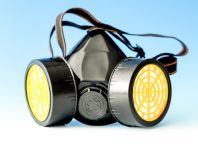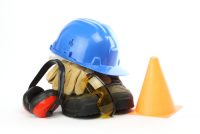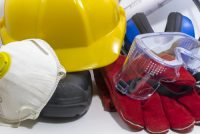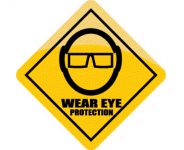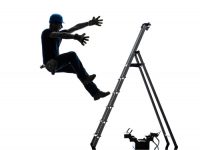Category: Personal Protective Equipment
No safety technology is changing as fast as that employed in PPE. The devices of just a few years ago are now obsolete by replacements that are lighter, easier to use, and more protective. These resources alert you to developments in the field, and equally important, supply training ideas to get your workers to use their PPE, and use it correctly.
Respirators can be real lifesavers. A firefighter inside a building filled with toxic smoke breathes clean air because of his respirator, as does a painter inside a spray booth. But for workers with underlying heart or lung issues, a respirator can place a dangerous amount of stress on the body. That’s why OSHA’s respiratory protection […]
When a worker has to wear a respirator or hearing protection, it may seem obvious that they will require training in the use and care of their equipment. When the subject is protective clothing, the need may be less obvious—but it is still there.
When you think of personal protective equipment (PPE), you may naturally think of respirators, safety glasses, hard hats, safety shoes, hearing aids, and gloves. Although these are the most common types of PPE—protecting the most vulnerable areas and organs—some whole-body hazards require whole-body protection.
Are chemical-resistant gloves required in your workplace? How do you select the right ones? When it comes to chemical-resistant gloves, several choices exist, and there are a number of issues to consider when selecting the right glove: Consider the type of chemical. Acids, caustics, solvents, and oils have different requirements for gloves. Chemical contact considerations […]
OSHA says 70 percent of workers sustaining hand injuries were not wearing gloves, and that the other 30 percent were wearing improper or damaged gloves. These estimates underscore the need for proper glove selection and care. Some general glove use and care instructions for your next safety meeting on hand protection include: Make sure the […]
When you can’t eliminate a hazard any other way, it’s your duty under the law to provide apparel or gear to protect the worker from that hazard.
Here’s one employer that takes personal protective equipment (PPE) very seriously and does everything possible to encourage employees to do likewise. CSX is one of the nation’s leading transportation suppliers. Its transportation network encompasses about 21,000 miles of track in 23 states, the District of Columbia, Ontario, and Quebec. Barry Morton is the former head […]
How many jobs in your facility could be performed by someone wearing a blindfold? Even a relatively minor eye injury can send a worker home for the day, so it makes not only safety sense but also business sense to protect workers’ eyes. March is Workplace Eye Health and Safety Month, which makes this an […]
When a worker gets hazardous substances in the eyes or on the skin, seconds count. Make sure your workers can get to an eyewash station or safety shower quickly and know how to use it properly. A worker mixes chemicals incorrectly, and they explode in his face. Another drops a bottle, and the chemical splashes […]
Falls are a leading cause of workplace injury and death. Fall protection also routinely makes OSHA’s Top 10 Violations list every year. Employees fall for many reasons: unstable working surfaces, improperly positioned ladders, misuse of fall protection, and unprotected sides and edges of working surfaces. OSHA says that you must set up your worksite to […]

